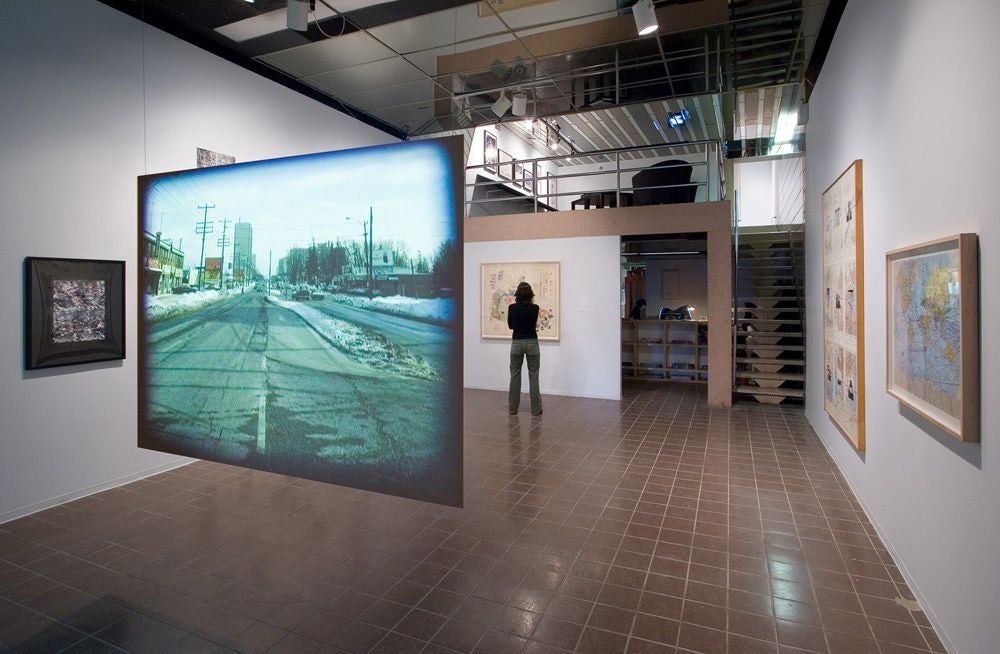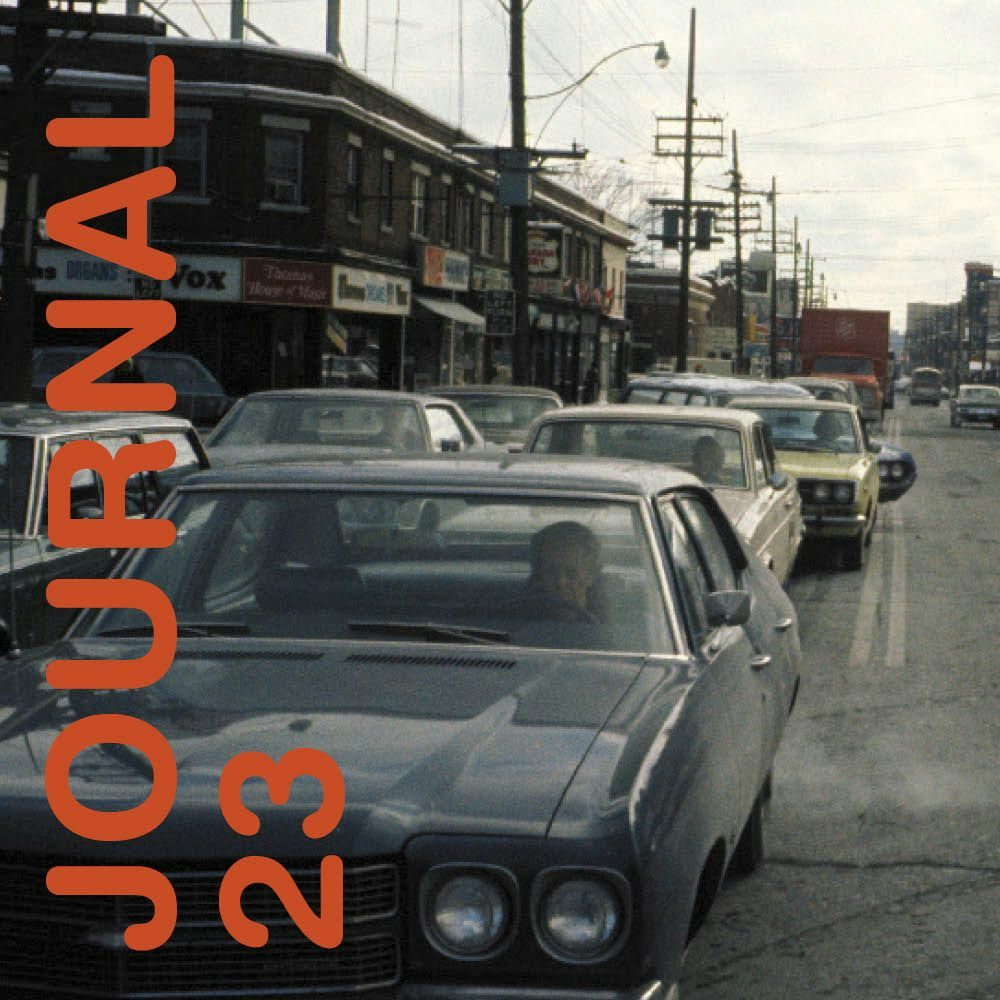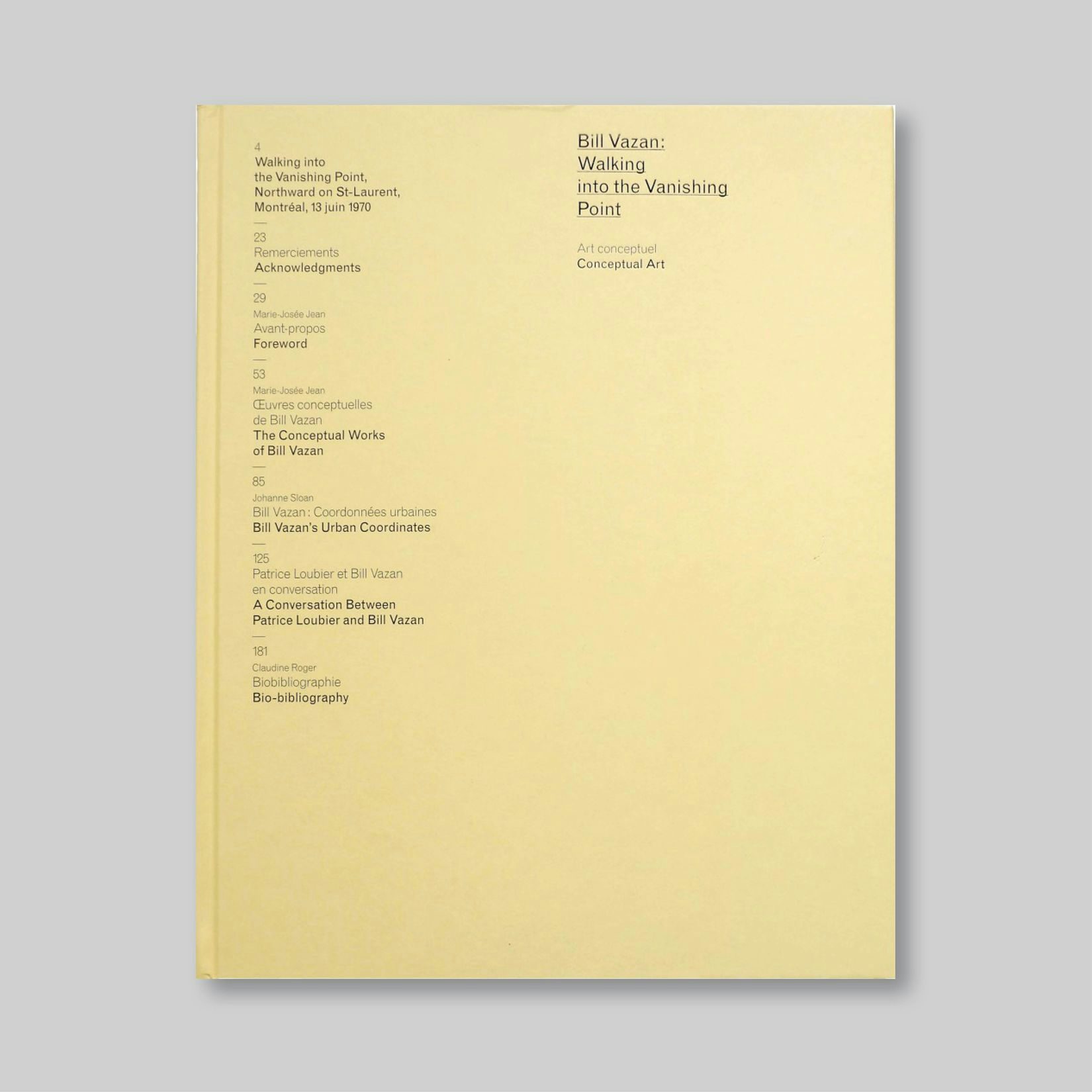
Bill Vazan. Walking into the Vanishing Point
2007.05.05 - 06.23
A Conceptual Itinerary
Bill Vazan’s practice is usually associated with Land Art and multipart photographs, yet as early as the end of the 1960s he had begun developing a singular conceptual language and creating a series of emblematic works. Up to now these works have not received as much attention as his other art. In an effort to extend our research into conceptualism, begun with the presentation of the exhibition devoted to the N.E. Thing Co. and Iain Baxter&, we decided it was vital that we mount this first exhibition of Vazan’s conceptual art. It brings together never-before-shown works, videographic experiments, and a major documentation component; it has been produced with the cooperation of students in the art history department of Université du Québec à Montréal as part of an exercise designed to initiate them in the multiple aspects of exhibition design and organization.

Since the late 1960s, Bill Vazan has made journeys on foot and by automobile, as well as along bus and subway lines, in Montréal and Toronto. This performance-based enterprise has been deployed as sequences of photographs, sometimes comprising a hundred or so views; maps showing the routes followed; and annotations. The taking of the photographs always follows a systematic protocol (they are taken at every intersection, every bus stop, and so on), with the artist rigorously imitating the characteristics of amateur photography: approximate framing, unwanted reflections and interference, insouciance with regard to lighting. His method has the benefit of drawing attention to the action of the work and of rendering visible, or even palpable, the temporal and spatial constituents of the journeys accomplished. Contrary to his Land Art, which results in scrupulously thought-out and composed images, Vazan’s “itineraries” seek to capture a more immediate experience whereby the act of seeing and the act of recording take place simultaneously. By making walking (or travelling by other means) inseparable from the act of taking pictures, he is making a conceptual attempt to transform the distance between two points into the very material of the work.
These local actions were created on a world scale when Vazan undertook the projects Canada Line (1969–1970), Worldline (1969–1971) and Intercommunication Lines (1968/2002), which represent an awareness of movements that have gone on to become global. The artist marked lines in museums in eight Canadian cities, followed by eighteen others around the world, affixing lengths of black tape to the ground to virtually link all the locales. The Worldline project, implemented globally and simultaneously on March 5, 1971, also gave rise to a published work that documented every stage in the production of the project. Vazan’s virtual line is no less real than are borders between countries, air corridors, satellite communications or geodetic coordinates. It is the manifestation of a new form of space and time, which has become abstract in our society of global communication. Worldline and Intercommunication Lines give concrete expression to such lines – which, in configuring the space of the world, signal the end of distances and compress time, even as they generate major social, economic and individual movements.
The issues raised in Vazan’s works remain current, and are elaborated through a conceptual language in which the line is predominant. That line is by turns ephemeral and imagined; it may be drawn in snow or in sand, even on postcards – although it is most often configured by journeys. The line is the dominant element in Bill Vazan’s conceptual art in that it makes visible the links that exist between and among things, whether within a local territory or a system of worldwide communications.
This exhibition has been produced with the cooperation of students in the art history department of Université du Québec à Montréal as part of an exercise designed to initiate them in the multiple aspects of exhibition design and organization.
Curator assistance : Saada El-Akhrass, Catherine Héroux and Eugénie Marcil. Financing : Pascale Gagnon-Boucher and Élisa Mottard. Research and documentation : Justine Lebeau and Geneviève Loiselle. Logistics : Daniel Gagnon. Journal coordination : Laurence Beaumier-Breton. Exhibition circulation : Huguette Laperle. Promotion and press relations : Jacinthe Blanchard-Pilon and Marie-Josée Roch. Animation : Andréanne C.-Desfossés.
